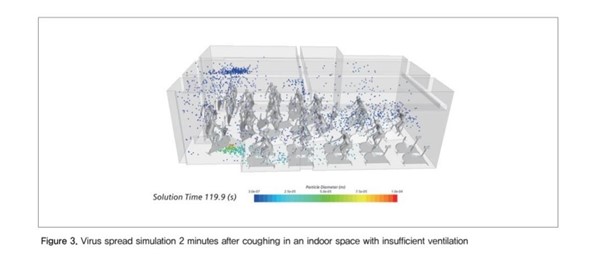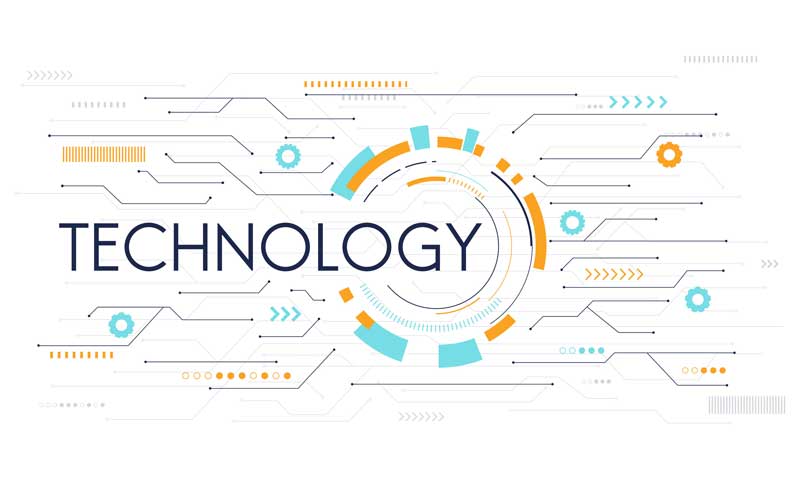Introduction
Over the decades, IT technology has advanced rapidly and provided us with numerous conveniences. As a result, these IT-related technologies have begun to affect our productivity, health, and lives. In particular, as the COVID-19 situation has worsened, many governments and organizations are using IT technology to block the spread of the disease. Furthermore, advanced technologies, such as big data-based algorithms, allow humanity to predict and prevent upcoming diseases.
COVID-19 Situation
The 2019 coronavirus disease (COVID-19) emerged as a major global public health disaster, starting in Wuhan, China, on December 31st, 2019. It was caused by SARS-CoV-2, severe acute respiratory syndrome coronavirus 2. The disinfection attempts in Wuhan failed, allowing the virus to spread across other areas in China. As the virus began to spread worldwide, the World Health Organization (WHO) declared a COVID-19 pandemic on March 11th, 2020. To date, COVID-19 has killed about 6.5 million people and infected around 627 million. However, this is only the reported case, and the estimated number of infections and deaths is much higher.
IT Technology and COVID-19
As the COVID-19 situation occurred, the IT industry also changed rapidly in response to it. Many digital technologies have emerged to support COVID-19 prevention and disinfection. For instance, artificial intelligence was exclusively designed to identify COVID treatments, big data was used in epidemiological investigation, and health information systems appeared. These new technologies have helped governments deal with the pandemic effectively. The GMI (Global Market Insight) mentioned that COVID-19’s impact on the healthcare IT industry is considerable. Also, COVID-19 played a significant role in the increase in the demand for digital healthcare, such as mobile health applications, IoT (Internet of Things) based real-time health monitoring systems, and wearable devices (Ugalmugle and Swain, 2022).
What is Epidemiological Surveillance?
Epidemiological surveillance (public health surveillance, clinical surveillance) is an analysis and interpretation process that identifies epidemiological characteristics such as the occurrence pattern, transmission path, and cause of a specific disease or epidemic. During this process, the risk factors are analyzed and used to track emerging issues and find active solutions in a timely manner. For example, during the COVID-19 pandemic, an epidemiological investigation was done by multiple governments and institutes, such as the WHO (World Health Organization).
What is Contact Tracing?
Contract tracing is a process of tracking and identifying an individual who has contacted an infected person. The major purpose of contact tracing is to reduce the spread of infection, alert individuals to the possibility of infection, provide treatment to already infected people, and research for epidemiological surveillance.
When an individual is identified as someone who has an infectious disease, his/her case is reported to the disease control authorities, and the individual is interviewed to track the chain of transmission, such as their sexual partners, family members, those who have been in close contact with, and the places they went. When the contacts are found, they might be isolated and offered healthcare if necessary.
South Korea is one of the countries that successfully managed to keep COVID-19 under control by adopting contact tracing. Korea used contact tracing to study the epidemic characteristics of COVID-19 and to slow down the transmission process of the disease. With the combination of various IT and digital technologies, they were able to track the transmission route effectively (Lee et al., 2020).
The Usage of IT Technology in Infection Management
Various IT technologies are used in general for infectious disease management. Among these technologies, simulation programs and AI are used for epidemiological investigation.

(The 3D picture of the transmission route in the witness center was implemented by a simulation program).
(KDCA, Results of epidemiological investigation of the COVID-19 epidemic that occurred in fitness centers. October 27, 2022)
The KDCA (Korea Disease Control and Prevention Agency) epidemiological investigation team and analysis task force conducted public health surveillance in order to track the transmission of COVID-19 and its biological characteristics. By using CCTV data and online surveys to run the simulation, they were able to identify the risk factors. It was confirmed that droplets discharged during exercise spread throughout the spinning chamber after two minutes (Eun Young et al., 2021). Based on these results, they suggested solutions to the public, such as periodic ventilation, wearing masks, and refraining from using public facilities that can spread the disease.
IT technology, such as big data, has also been used for contact tracing. The combination of these data, such as cell phone calls, cell phone location information, GPS, card transactions, CCTV data, and online surveys, helps the disease control authorities identify the possibly infected individuals.
Future of the IT Technology and Disease Control
As governments in a lot of countries, including Singapore, South Korea, and India began to invest in healthcare services and upgrade infrastructure, the healthcare IT market size is expected to grow rapidly. According to the GMI, (Global Market Insights,) the healthcare IT market size had a value of more than USD 261 billion in 2021 and is predicted to grow at around 14% compound annual growth rate until 2030, reaching a market size of USD 870 billion (Ugalmugle and Swain, 2022).
There is also a problem with IT healthcare, namely privacy and security issues. Biological data, such as fingerprints, genes, and health information, can be abused for crimes. Since numerous personal information and biological data are saved in the database, healthcare service providers should be extra careful about the security and come up with solutions to prevent information leaks.
References
- Eun Young, K., Sin Young, P., Seoun Young, L., Jeong Hee, Y., Myung ok, L., Joohyung, L., Geun Sang, K., Jung Nim, P., Hye Won, H., Min Ki, S. and Seongmin, C. (2021). Results of epidemiological investigation of the Coronavirus Disease-19 epidemic that occurred in fitness centers. [online] KDCA, pp.1221–1224. Available at: https://www.bing.com/search?q=KDCA+results+of+epidemiological+investigation&cvid=9f87e55e7e1145c180471be27c7b10f3&aqs=edge..69i57.8313j0j1&pglt=43&FORM=ANNTA1&PC=U531 [Accessed 27 October 2022].
- Lee, S.W., Yuh, W.T., Yang, J.M., Cho, Y.-S., Yoo, I.K., Koh, H.Y., Marshall, D., Oh, D., Ha, E.K., Han, M.Y. and Yon, D.K. (2020). Nationwide Results of COVID-19 Contact Tracing in South Korea: Individual Participant Data From an Epidemiological Survey. JMIR Medical Informatics, [online] 8(8). Available at: https://www.ncbi.nlm.nih.gov/pmc/articles/PMC7470235/ [Accessed 25 October 2022].
- Ugalmugle, S. and Swain, R. (2022). Healthcare IT Market Size & Share | Global Trends Report 2026. [online] Global Market Insights, Inc. Available at: https://www.gminsights.com/industry-analysis/healthcare-it-market [Accessed 25 October 2022].
- World Health Organization (n.d.). Surveillance in Emergencies. [online] www.who.int. Available at: https://www.who.int/emergencies/surveillance [Accessed 25 October 2022].
